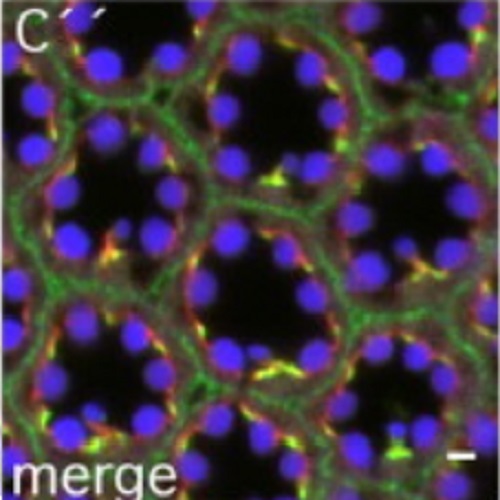A role for the extracellular domain of Crumbs in morphogenesis of Drosophila photoreceptor cells.
Morphogenesis of Drosophila photoreceptor cells includes the subdivision of the apical membrane into the photosensitive rhabdomere and the associated stalk membrane, as well as a considerable elongation of the cell. Drosophila Crumbs (Crb), an evolutionarily conserved transmembrane protein, organizes an apical protein scaffold, which is required for elongation of the photoreceptor cell and extension of the stalk membrane. To further elucidate the role played by different Crb domains during eye morphogenesis, we performed a structure-function analysis in the eye. The analysis showed that the three variants tested, namely full-length Crb, the membrane-bound intracellular domain and the extracellular domain were able to rescue the elongation defects of crb mutant rhabdomeres. However, only full-length Crb and the membrane-bound intracellular domain could partially restore the length of the stalk membrane, while the extracellular domain failed to do so. This failure was associated with the inability of the extracellular domain to recruit beta(Heavy)-spectrin to the stalk membrane. These results highlight the functional importance of the extracellular domain of Crb in the Drosophila eye. They are in line with previous observations, which showed that mutations in the extracellular domain of human CRB1 are associated with retinitis pigmentosa 12 and Leber congenital amaurosis, two severe forms of retinal dystrophy.

- Eur. J. Cell Biol. 2009 Dec 29;88(12):765-77
- 2009
- Developmental Biology
- 19717208
- PubMed
Enabled by:
